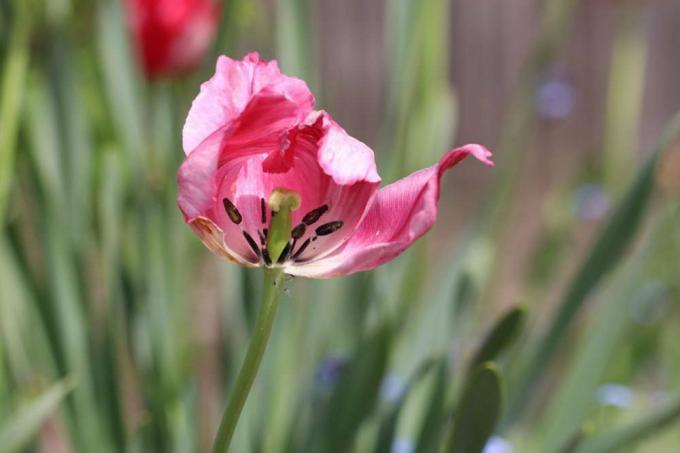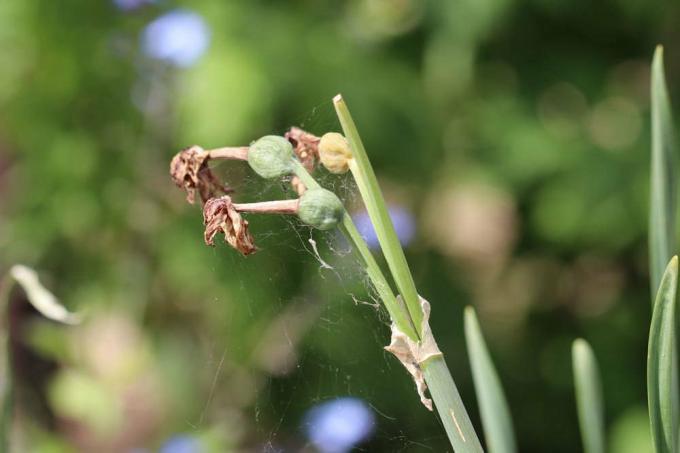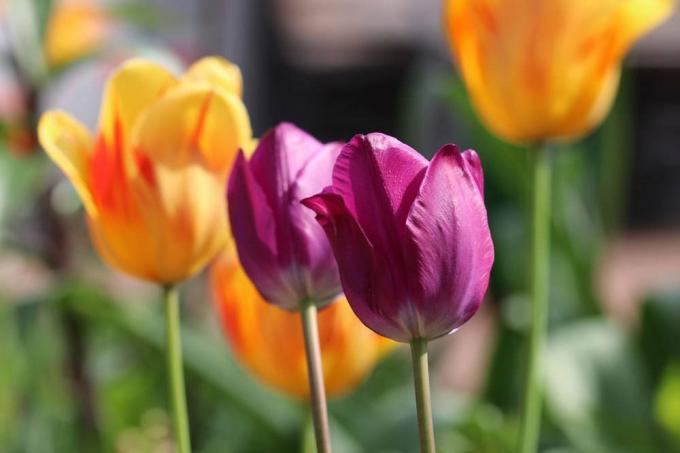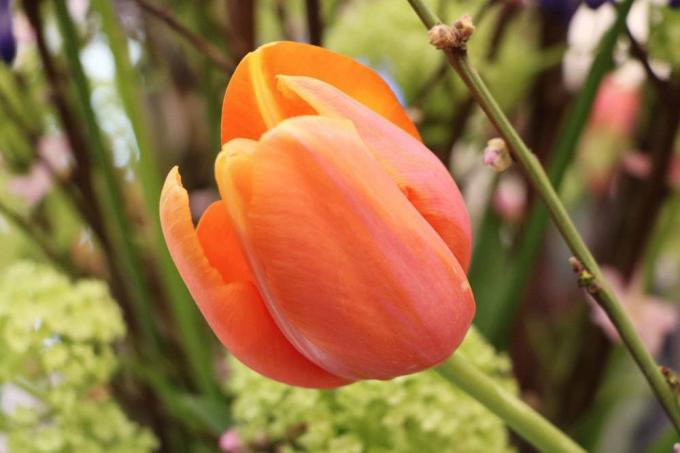
table of contents
- Why cut faded tulips?
- Cut off withered tulips
- Performing late is a risk
- Care after flowering
- Store tulip bulbs
- Gloves as protection
At the end of their flowering period, tulips give hobby gardeners a headache. The question arises rightly: is it so easy to cut off faded tulips? Anyone who hastily reaches for the scissors prevents a vital process that already ensures the next flower spell. These instructions explain in detail how to properly carry out post-flowering care. You can find out here which options exist for the correct handling of dead tulip bulbs.
Why cut faded tulips?
That is why faded tulips are cut
Tulips thrive as perennial plants, the flower stalks and leaves of which rise from bulbs as a perennial organ. In every tulip bulb, the life force rests in the splendid beauty of the flowers for many years. If it weren't for the endeavor of the plant to reproduce in as large numbers as possible with the help of seeds. In order to produce the seeds after flowering, a tulip invests a lot of energy, which is then lacking for the next flowering period.
At this point the plans of the gardener and his tulip diverge. In the ornamental garden, the focus is on lavish tulip blooms and less on self-seeding. The pruning of wilted tulips therefore plays a key role in professional care.
Cut off withered tulips
Cut withered tulips in stages
The ideal pruning of a tulip has two goals. On the one hand, the unwanted, debilitating seed growth is prevented, on the other hand, the remaining nutrients in the leaves should not be lost. Therefore, experts advocate cutting a faded tulip in 2 stages.

How to do it right:
- cut the main stem so that the withered flower is removed
- Leave all green parts of the plant in the bed during this phase
- Only cut leaves and stems close to the ground when they have completely yellowed
This procedure ensures that the valuable nutrients are shifted into the tulip bulb. Reserves are created from this, from which the flowering in the next spring will benefit. This regrouping of nutrients takes a long time and should not be interrupted prematurely. Therefore, one should race can only be mowed for the first time when the leaves have completely drawn in and died.
Performing late is a risk
Tulip leaves cut too late pose risks
While a premature cut destroys important nutrient reserves, if the deadline is too late, there is a risk of rot, disease and pest infestation. These symptoms will help you identify the perfect time to remove the retracted tulip leaves.
Best time to remove the tulip leaves:
- the yellowed leaves no longer have any green spots
- the leaves, which are firm during the flowering period, visibly soften
- the tulip leaves gradually bend to the ground

Please do not delay cutting until the leaves can be plucked out. When a tulip bulb sheds its above-ground parts of the plant, the process of storing nutrients is complete. The leaves that are then softened magically attract pests and pathogens.
Care after flowering
Instructions for perfect care after flowering
At the end of the flowering period, a tulip's growth phase is far from over. Underground preparations for the next season are now in full swing. By cutting a main stem to prevent the capsule fruit from growing, the tulip bulb is now focused on its continued existence. With the following care after flowering you support the busy herald of spring in his efforts.
- From mid / late May fertilize with sifted compost, guano granulate or horn shavings
- Apply a liquid fertilizer in the flower box and tub
- until the leaves are cut, continue watering if the soil has dried on
If you have cut off all parts of the plant close to the ground, the natural rainfall covers the low water requirement during the summer.
Store tulip bulbs
Take care of summering tulip bulbs
A tulip bulb tends to dig itself deeper and deeper into the ground until it disappears, never to be seen again. In order to counteract this process, we recommend returning to a traditional form of over-summering a tulip bulb. The bulbs do not linger in the ground, but are dug up and stored until autumn.

That is how it goes:
- in May / June gradually cut off everything that has faded and the leaves that have retired
- then lift each tulip bulb out of the ground with the digging fork
- Cut off the dead roots with sharp, disinfected scissors
- Clean the onions with a brush and do not wash them with water
You spend the clean tulip bulbs in the cool, dark cellar and wrap them in peat waste, sand or newspaper. Please sort out damaged specimens or specimens covered with brown spots, as there is no prospect of undamaged over-summer here. Until the planting season begins in autumn, regularly check the bulbs for diseases and pests.
Gloves as protection
Gloves protect against poisonous tulipanine
The toxin tulipanin is contained in all types of tulips. This toxin has the following harmful effects on human physiology both internally and externally.
Skin contact
- Irritation, eczema, inflammation and torn skin areas (tulip dermatitis)
Consumption of several onions
- Stomach cramps, vomiting, circulatory disorders up to respiratory failure
Since care after flowering involves frequent contact with the sap containing tulipanin, we recommend wearing gloves and long-sleeved clothing. It should also be borne in mind that tulip and table onions are often mixed up.

If you are summering the flower bulbs in the cellar, please ensure that both types of bulbs are stored separately. Since the toxin also has a harmful effect on animals, do not dispose of the clippings or discarded tulip bulbs on the compost, cattle or horse pastures.



